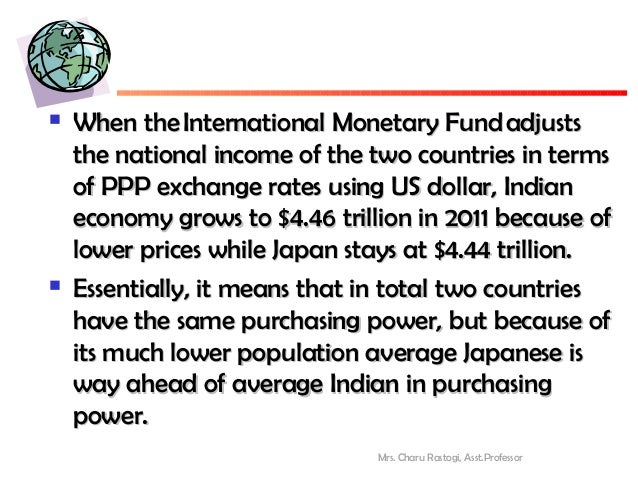Basic Exchange Rate Theories Discussed Download For Mac

Basic Exchange Rate Theories Discussed Download For Mac Pro
Purchasing power parity (PPP) is an economic theory that compares different countries' currencies through a 'basket of goods' approach. According to this concept, two currencies are in equilibrium or at par when a basket of goods (taking into account the exchange rate) is priced the same in both countries. Closely related to PPP is the (LOP), which is an economic theory that predicts that after accounting for differences in interest rates and exchange rates, the cost of something in country X should be the same as that in country Y in real terms. To make a comparison of prices across countries that holds any type of meaning, a wide range of goods and services must be considered. The amount of data that must be collected and the complexity of drawing comparisons makes this process difficult. To facilitate this, the International Comparisons Program (ICP) was established in 1968 by the University of Pennsylvania and the United Nations.
Purchasing power parities generated by the ICP are based on a worldwide price survey comparing the prices of hundreds of various goods. This data, in turn, helps international macroeconomists come up with estimates of global productivity and growth. As a light-hearted annual test of PPP, The Economist has tracked the price of McDonald's Corp.’s (MCD) Big Mac burger in many countries since 1986. The highly publicized Big Mac index measures the purchasing power parity (PPP) between nations using the price of a Big Mac as the benchmark. The Big Mac index suggests, in theory, changes in exchange rates between currencies should affect the price consumers pay for a Big Mac in a particular nation, replacing the 'basket' with the famous hamburger. This is a prime example of how the 'law' of one price fails in practice.
The five nations with the highest GDP in market exchange terms are the U.S., China, India, Japan and Germany. This comparison changes when PPP is used. According to 2017 data from the International Monetary Fund (IMF), China has overtaken the U.S.
As the world's largest economy based on purchasing power with 23,122 billion current international dollars. Comes in second with 19,362 billion. India, Japan and Germany follow with 9,447 billion, 5,405 billion, and 4,150 billion, respectively. Transport costs: Goods that are not available locally will need to be imported, resulting in transport costs. Imported goods will consequently sell at a relatively higher price than the same goods available from local sources. Taxes: When government sales taxes, such as (VAT), are high in one country relative to another, this means goods will sell at a relatively higher price in the high-tax country.

Government intervention: Import add to the price of imported goods. Where these are used to restrict supply, demand rises, causing the price of the goods to rise as well. In countries where the same good is unrestricted and abundant, its price will be lower. Governments that restrict exports will see a good's price rise in importing countries facing a shortage and fall in exporting countries where its supply is increasing. Non-traded services: The Big Mac's price is composed of input costs that are not traded. Therefore, those costs are unlikely to be at parity internationally. These costs can include the storefront, insurance, utility expense and the.
According to PPP, in countries where non-traded service costs are relatively high, goods will be relatively expensive, causing such countries' currencies to be overvalued relative to currencies in countries with low costs of non-traded services. Market competition: Goods might be deliberately priced higher in a country because the company has a over other sellers, either because it has a monopoly or is part of a of companies that manipulate prices. The company's sought-after brand might allow it to sell at a premium price as well. Conversely, it might take years of offering goods at a reduced price to establish a brand and add a premium, especially if there are cultural or political hurdles to overcome.
Inflation: The rate at which the price of goods (or baskets of goods) is changing in countries can indicate the value of those countries' currencies. Such relative PPP overcomes the need for goods to be the same when testing absolute PPP discussed above.